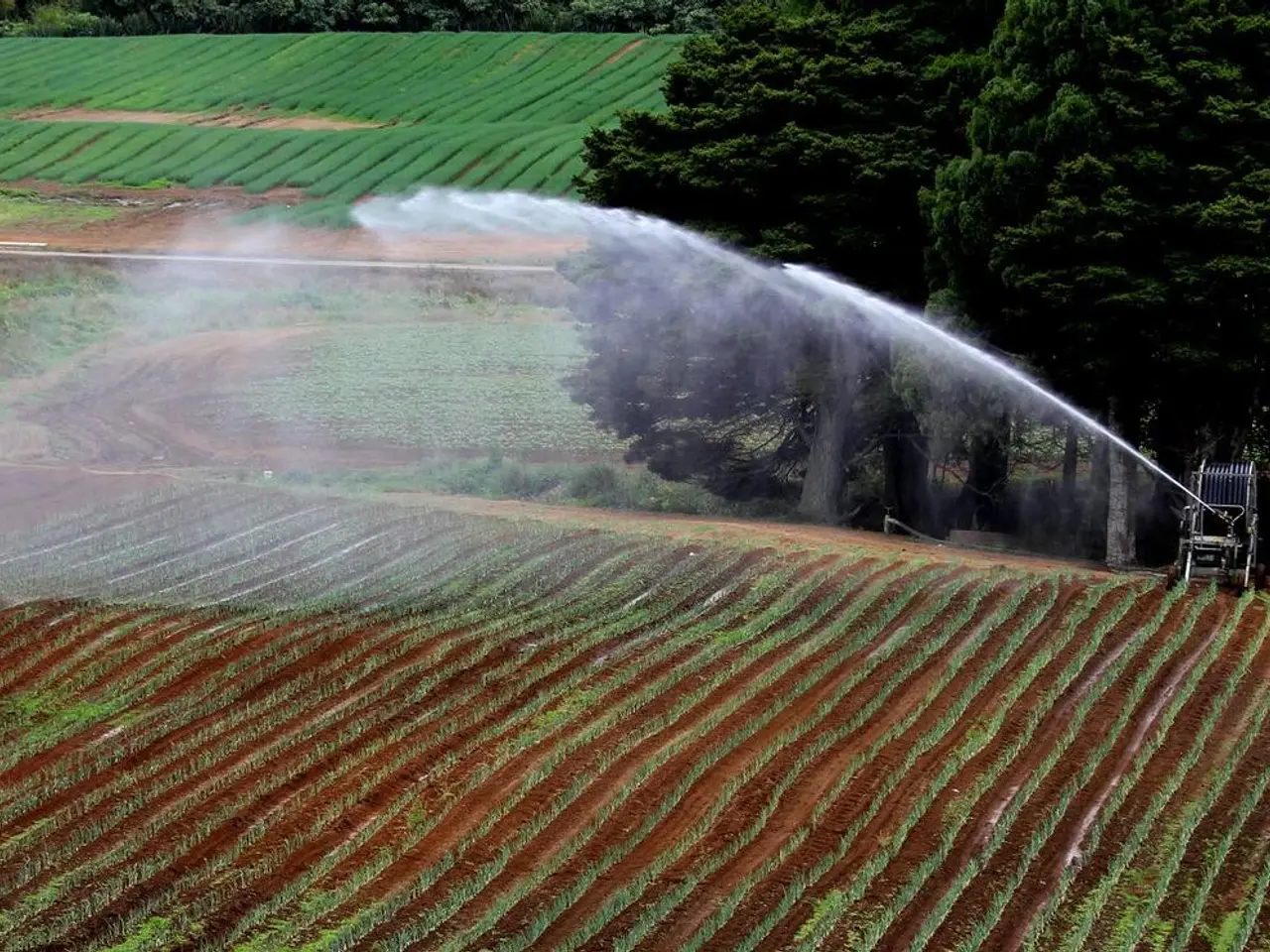As a Farmer, Hear Us Out as We Advocate for Climate Financing
In the face of climate risks such as floods, heatwaves, and droughts, the importance of soil health has never been more crucial. Degraded soils, which struggle to retain moisture, pose a significant vulnerability. Fortunately, regenerative farming offers a promising solution, not just for soil preservation, but also for financial robustness and resilience.
Regenerative farming, a shift towards sustainable and holistic farming practices, requires support during the transition period, particularly in terms of financial buffer and education. This is where organisations like Save Soil, along with other leading NGOs, come into play. They are advocating for policies that make climate finance more accessible for farmers adopting regenerative practices.
One of the key strategies is the introduction of financial incentives such as carbon credits and direct subsidies. These incentives can help offset the significant upfront costs associated with regenerative agriculture, which can range from €2000 to €5000 per hectare. Companies like Microsoft have already started purchasing regenerative farm carbon credits, providing farmers with new revenue streams tied to climate benefits.
However, the lack of consistent regulation and standardized measurement frameworks for environmental outcomes is a major barrier. To address this, policies should promote harmonized data infrastructures, enabling farmers to measure, report, and verify their environmental impact credibly. This would reduce confusion and increase trust in regenerative finance mechanisms.
Technical assistance is another crucial factor. Governments and organisations should provide training on soil health, carbon sequestration, and ecosystem service monitoring to facilitate the transition to regenerative practices. This support helps reduce risks and empowers farmers to make better decisions with available technology like precision agriculture.
Market activation is also essential. Encouraging corporate commitments and supply chain incentives can amplify demand for regenerative products, linking farmers to premium markets. Policy can encourage such partnerships alongside finance access.
Blended finance models, which combine public funds, private investment, and philanthropic capital, can unlock scalable climate finance specifically tailored to regenerative agriculture. This approach addresses both risk and return considerations, making climate finance more attractive for farmers.
Agricultural soils, which hold more carbon than vegetation and the atmosphere combined, are potential carbon sinks. However, around 40% of the world's land is already degraded, making soils less effective at producing food and carbon sequestration. This is a problem that primarily lies with farmers, who are the stewards of the soil.
The Save Soil Movement, led by programme director Anand Ethirajalu, is calling for climate finance to be diverted to farmers. Currently, agriculture and food systems as a sector receive less than 4% of the climate finance. This is particularly concerning when we consider that small and marginal farmers, who constitute 80% of farmers globally and produce 30% of the world's food, receive less than 1% of climate finance.
Anand Ethirajalu, who discovered adulterants in food in India at the age of 15, has been a champion for sustainable farming practices. He travelled across India to learn about regenerative farming from pioneers in the field and now helps local farmers transition to a diverse, regenerative approach to farming. Supporting small farmers in their transition to regenerative agriculture is a smart investment for a better tomorrow.
As the United Nations Convention to Combat Desertification celebrates its 30th anniversary and their major conference, UNCCD COP16, is currently underway in Riyadh, Saudi Arabia, it is a timely reminder of the urgent need for action. Healthier soil can retain more moisture during both rainy and dry seasons, making farms more resilient to climate risks. Let us work together to empower farmers and preserve our soil for future generations.
- To combat the vulnerabilities posed by degraded soils due to climate change, regenerative farming, a shift towards sustainable and holistic farming practices, requires financial support during the transition period, especially in the form of financial buffer and education.
- Organizations like Save Soil, along with other leading NGOs, are advocating for policies that make climate finance more accessible for farmers adopting regenerative practices, which includes the introduction of financial incentives such as carbon credits and direct subsidies.
- Adequate technical assistance is crucial for farmers to transition to regenerative practices. Governments and organizations should provide training on soil health, carbon sequestration, and ecosystem service monitoring to reduce risks and empower farmers to make better decisions with available technology.
- As agriculture and food systems receive less than 4% of the climate finance, Anand Ethirajalu, the program director of the Save Soil Movement, is calling for climate finance to be diverted to farmers, particularly small and marginal farmers who produce a significant amount of the world's food but receive less than 1% of climate finance.





